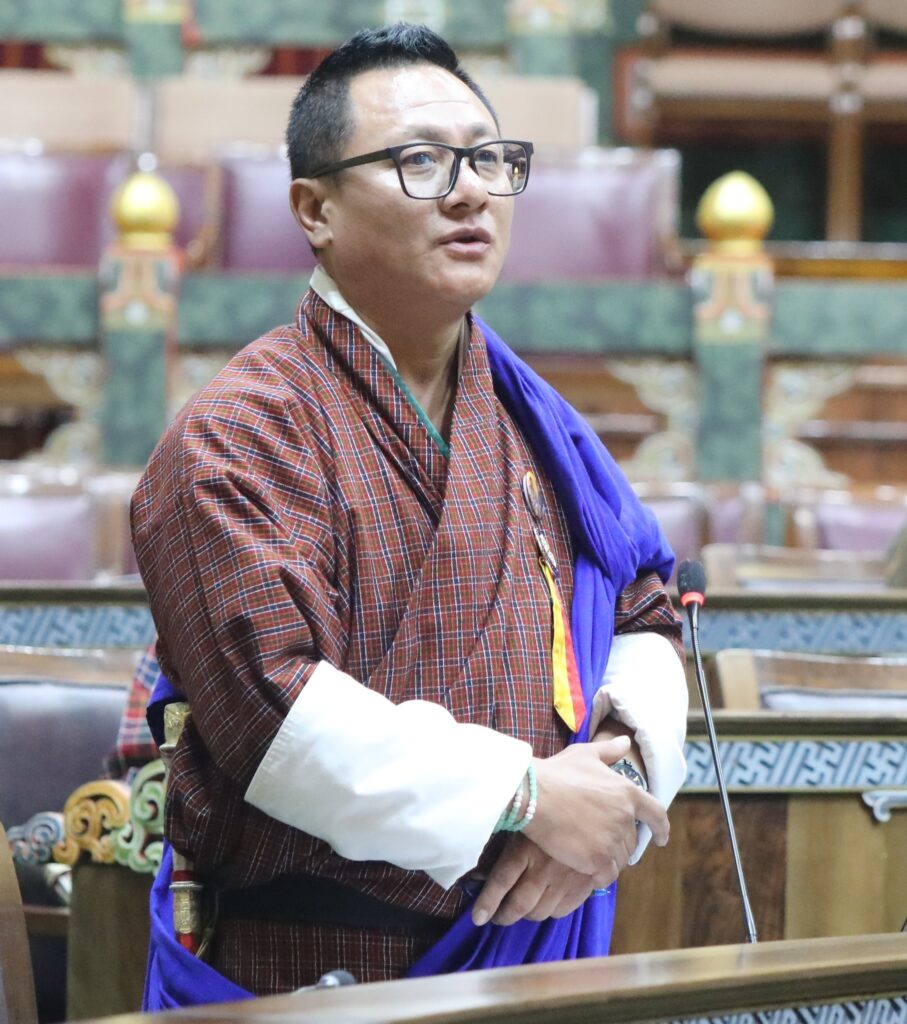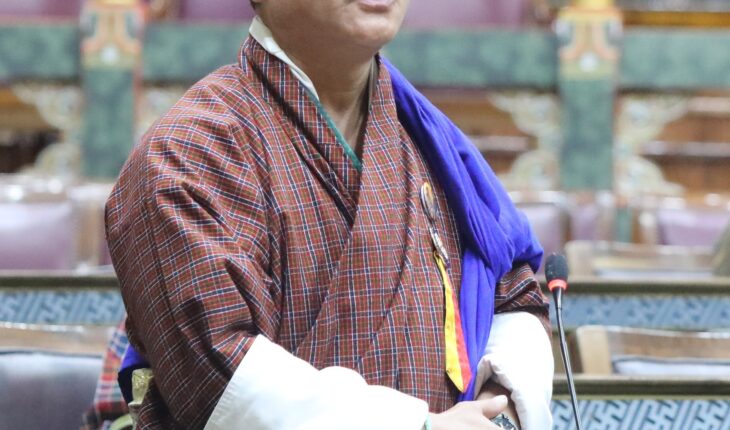
Vertical expansion versus environment sustainability
Amid growing urban housing crisis, lawmakers are pushing to raise the current building height limits in Yenlag Throms
DAWA ZANGMO
Thimphu
embers of Parliament (MPs) during the ongoing session of the National Assembly submitted a formal petition to the house calling on the government to review and amend current building regulations, specifically the restriction that limits construction to three stories in Yenlag Throms across the country.
The MPs argued that the three-story limit is no longer adequate to meet the demands of growing urban populations and is exacerbating Bhutan’s housing crisis.
The petition, which was deliberated during the ongoing parliamentary session, urged the Ministry of Infrastructure and Transport (MoIT) to study the feasibility of increasing the building height limit from three stories to five in all districts.
They stressed that the current restriction is outdated and insufficient to accommodate rising population density and urbanization in many of Bhutan’s towns and settlements.
In their petition, the MPs claimed the three-story restriction is significantly impeding urban development. The issue has reached a point where citizens in some districts are reportedly resorting to makeshift shelters due to the scarcity of proper rental accommodation.
A MP said that urban growth is being stifled. “When we don’t allow vertical expansion, we are left with no choice but to sprawl outward, which has its own adverse consequences,” he said.
The call for reform was tabled by Pempa, the MP representing Bongo-Chapcha constituency from Chhukha Dzongkhag. He emphasized that Chhukha, being a hub of significant economic activity and one of the fastest-growing regions, must have development guidelines that reflect its changing realities.
“Chhukha has the economic and demographic momentum to justify the increase. The terrain in many areas, like Gedu, is flat and favorable for vertical construction. I believe we can add more stories, especially as we see new developments like a larger Dzong being planned,” Pempa said.
According to him, allowing taller buildings would help address regional development disparities and promote balanced national growth. He underlined that increasing building heights would enable towns to accommodate more residents without expanding into surrounding green areas.
The demand for change also stems from growing concern among MPs that Bhutan’s current pattern of horizontal urban expansion is putting the country’s constitutional environmental commitments at risk.
The Constitution mandates that Bhutan must maintain at least 60% of its total land under forest cover. Lawmakers fear that the trend of low-rise, wide-spread urban growth may threaten this principle.
Pema Drukpa, MP for Khamaed-Lunana in Gasa District, echoed these concerns. “The housing crunch and the ban on vertical expansion are forcing horizontal development. This directly contradicts our national commitment to environmental preservation,” he stated.
Pema Drukpa added that if we don’t change the law soon, we risk undermining the very policies that make Bhutan a model for environmental sustainability.
MPs supporting the petition insisted that vertical growth—through permitting five-story buildings—would make better use of limited urban land, minimize encroachment into forests and agricultural land, and reduce infrastructure costs per capita.
Beyond the call for taller buildings, several MPs used the petition as an opportunity to highlight broader inefficiencies and inconsistencies in Bhutan’s urban planning and construction regulations.
Tshewang Rinzin, the MP representing South Thimphu, pointed out that frequent changes in development plans often leave property owners and builders uncertain.
“We need clarity and consistency. It becomes difficult when people start construction based on an approved plan, only for the guidelines to shift midway,” he said.
The MP’s concerns reflect frustrations among property developers and urban residents who find themselves caught between bureaucratic red tape and shifting regulatory frameworks. The MPs questioned whether the government had mechanisms in place to harmonize long-term planning with immediate urban demands.
Responding to the MPs, Lyonpo Chandra Bahadur Gurung, Minister for Infrastructure and Transport, acknowledged the concerns raised in the petition. However, he cautioned that any change to building height regulations must be informed by detailed expert evaluations.
“Before making changes to existing laws, we must conduct thorough studies that consider topography, soil stability, and population growth trends,” the minister said.
He added that a team of urban planners is scheduled to begin assessments in June across various districts to evaluate the feasibility of permitting five-story buildings.
The minister also reminded of the of legal complications surrounding the expansion of Yenlag Throms, or satellite towns. He noted that although the establishment of Yenlag Throms in all 20 districts had been authorized during the previous government’s tenure, progress had since been stalled by a Supreme Court writ.
“The SC ruled that any forward movement requires the formation of a high-level committee comprising legal experts. Given this, we have formally written to the Attorney General seeking legal counsel on how to proceed in a way that upholds the court’s directive,” the MoIT minister said.
He reiterated that the government is not ignoring the challenges but that we must follow due process to avoid legal setbacks or policy reversals.
In his closing statement, the National Assembly Speaker Lungten Dorji underscored the urgency of addressing inefficiencies in the country’s urban planning process. He warned that the uneven pace and quality of town planning across districts is making daily life more difficult for many Bhutanese citizens.
“Our towns are becoming increasingly inconvenient to live in,” Speaker Lungten Dorji said. “We must act quickly to identify and prioritize districts where urban planning is lagging. If we fail to address these disparities, we will only be creating larger problems for the future.”
Following the debate, the National Assembly formally referred the petition to the Environment and Climate Change Committee. The committee has been tasked with studying the issue and reporting its findings during the upcoming winter session.
However, the move hints that while legislative momentum is building around reforming building height restrictions, any actual policy change may take time due to the need for legal vetting, technical evaluation, and inter-ministerial coordination.
Nonetheless, for many MPs and citizens alike, allowing taller buildings in urban areas offers a pragmatic solution one that could preserve precious forest cover while accommodating urban growth in a more sustainable way.





